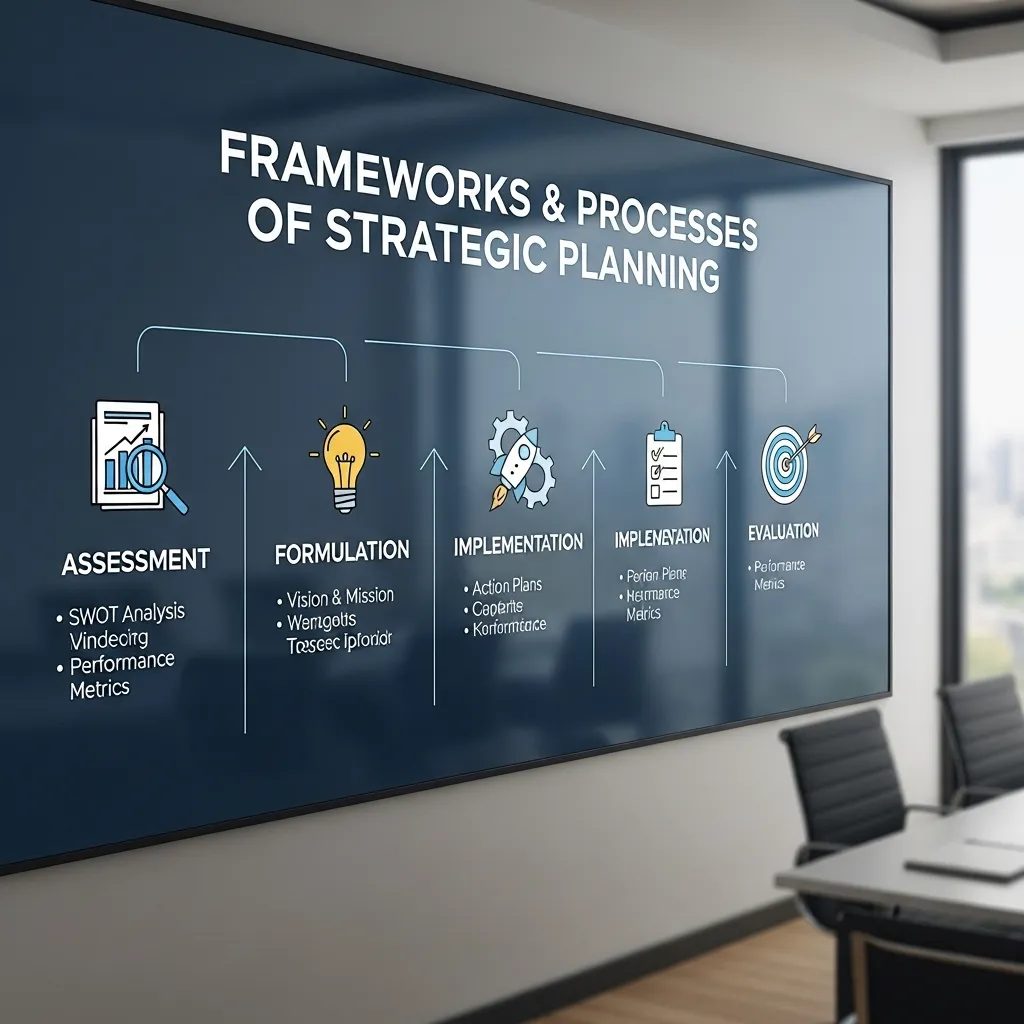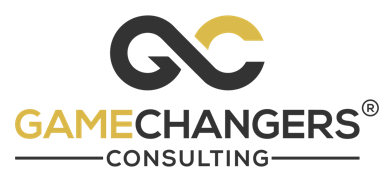FRAMEWORKS & PROCESSES: AN ALL-ENCOMPASSING GUIDE TO STRATEGIC PLANNING OVERVIEW
BOOSTING RETENTION THROUGH PEER CONNECTION & BELONGING
Experience the Gamechanger Challenge App in Action!
TRANSFORMING ONLINE LEARNING THROUGH CONNECTION & BELONGING
Experience the Gamechanger Challenge App in action!
Process & Frameworks
For virtually every successful organization in the United States, when you peel back the progress that an organization instills, there is a clear strategic planning process behind the scenes. In the absence of a formal framework, organizations run the risk of simply floating without true direction. Using the right frameworks, models, and methodologies, an organization can establish a formal plan that produces objectives and outcomes to aid in achieving mission and vision.
A strategic planning process refers to a framework to produce an organization’s objectives, priorities, resources, and measurable action steps. It generally is within a three to four step process and established differently with tools and results by PE frameworks, a number of leadership models, research, or consulted practical applications.
This draft will layout the steps within strategic planning, provide some basic PE processes and frameworks, and give you some starter outlines and templates.
The Strategic Planning Process: The Basics
At its most basic level, the Strategic Planning Process provides that every decision made in the organization is in support of the organization Mission and Vision.
The steps include:
Environmental Scan – Where are we now? (SWOT Analysis, PEST, or Data Review)
Define Mission and Vision – Why do we exist and where do we want to be?
Set 'Goals' & 'Objectives'– What do we want to achieve?
Develop Strategies – How will we achieve these goals?
Develop Action Plans – Who is doing what, by when, and with what resources will we fund that response?
Governance & Communication – Roll out the plans in an organization-wide way. Examples of Communication: town hall or communication meetings, presentations, consensus, etc.
Monitor & Adjust – Monitor ongoing with key performance indicators (KPI), adjust as necessary.
A mandated strategic planning framework gives consistency and accountability across teams.
Steps in Strategic Planning
Environmental Scanning
Use SWOT (Strengths, Weaknesses, Opportunities, Threats) analysis.
Apply PEST (Political, Economic, Social, Technological) for market insights.
Mission & Vision Development
Craft clear statements that inspire alignment.
Goal Setting
Establish SMART goals: Specific, Measurable, Achievable, Relevant, Time-bound.
Strategy Formulation
Identify long-term initiatives that bridge your current state to your vision.
Execution & Resource Allocation
Assign roles, budgets, and milestones.
Monitoring & Evaluation
Use KPIs, dashboards, and quarterly reviews to track success.

Stages of Strategic Planning
The stages of strategic planning can sometimes be grouped into three phases:
Planning Stage: Research, visioning and goal-setting.
Implementation Stage: Implementing strategic plans.
Evaluation & monitoring stage: Providing analysis for performance and continuous improvement to long-term strategy.
There are approaches that break this down into five or seven stages, however, the principle remains plan → act → measure → refine.
Strategic Planning Frameworks
Frameworks provide a framework for organizational decision making. Some examples include:
Balanced Scorecard (BSC): Focuses on financial, customer, internal process, and learning metrics.
OKRs (Objectives and Key Results): A widely used decision making tool by U.S. tech companies such as Google to achieve objectives to measure outcomes.
Hoshin Kanri (Planning with Attention): Aligns organization-wide goals with day-to-day management to build capacity for planning.
Porter’s Five Forces: Focused on assessing the competitive landscape.
SWOT analysis framework: A classic framework for reviewing internal/external aspects of a considering future options.
Choosing the correct framework will depend on the size and sector of your organizations and what you mean to achieve.

Affordable Strategic Planning Models
While frameworks provide structure, strategic planning models offer methodologies to follow.
Some of the most commonly used models include:
Basic Model: A good option for small U.S. businesses and nonprofits.
Issue-Based Model: Addresses primary organizational issues.
Alignment Model: Internal departments work in coordination.
Scenario Planning Model: Prepare for best, worst, and most likely futures.
Organic Model: Flexible, collaborative, and people-based.
Strategic Planning Methodology, Tools & Techniques
The right methodology, tools, and techniques can streamline the planning.
Methodologies: Gap analysis, Theory of Change, Blue Ocean Strategy.
Tools: SWOT, PESTLE, benchmarking, dashboards, Gantt chart.
Techniques: Brainstorming workshops, stakeholder interviews and data mapping.
For Example: Many U.S. organizations mix old tools like SWOT with contemporary methodology using OKRs plus dashboards for better outcomes.
Strategic Planning Outline & Process Template
When creating a plan, use this strategic planning outline:
Executive Summary
Mission & Vision Statements
Core Values
Environmental Analysis (SWOT/PEST)
Strategic Goals & Objectives
Strategies & Action Plans
Performance Metrics & KPIs
Implementation Timeline
Review & Evaluation Methods
Downloadable Strategic Planning Template
A free U.S.-focused process template to jumpstart your next planning cycle.
How to Select the Right Process Model for Your Organization
When selecting the best or right model for strategic planning process:
Small business: Basic Model (or OKRs) for clarity.
Nonprofit: Issue-Based or Alignment process for community work.
Enterprise: Balanced Scorecard or Scenario Planning for complex and large organizations.
Conclusion: The Process Engenders Results
The strategic planning process that you use to facilitate the difficult scraps of navigating your organization, is going to determine how, when, and why it grows, changes/adapts, and thrives season to season. The point is it does not matter if it is the Balanced Scorecard, OKR process, or issue based model, the important trick is to let it flex, measure performance and then strategize over time and practices. Don't abandon your future to chance (again)—carefully and thoughtfully select a proven strategic planning process framework and begin today.
FAQ
1. What is the strategic planning process in simple terms?
Answer: The strategic planning process is a step-by-step method organizations use to define goals, set priorities, and create action plans. It ensures every business decision supports the company’s mission, vision, and long-term strategy.
2. Why is the strategic planning process important for organizations?
Answer: Strategic planning gives your organization direction, focus, and accountability. It aligns teams around shared objectives, helps allocate resources efficiently, and ensures you measure progress with KPIs and performance dashboards.
3. What are the main steps of the strategic planning process?
Answer: The typical steps include assessing the current position, defining mission and vision, setting SMART goals, developing strategies, creating action plans, implementing them, and monitoring progress through regular evaluation.
4. How do I choose the right strategic planning framework for my business?
Answer: Choose a framework based on your organization’s size, industry, and goals.
- Small businesses → use the Basic Model or OKRs.
- Nonprofits → prefer Issue-Based or Alignment Models.
- Enterprises → rely on Balanced Scorecard or Scenario Planning Models.
5. What are the three main stages of strategic planning?
Answer: The three stages are:
1️⃣ Planning Stage – vision, mission, and goal-setting.
2️⃣ Implementation Stage – executing strategies and allocating resources.
3️⃣ Evaluation Stage – tracking results and refining plans for improvement.
6. How often should a strategic plan be reviewed?
Answer: Most U.S. organizations review their strategic plan quarterly or annually. Regular check-ins allow teams to assess performance, adjust priorities, and stay aligned with market or organizational changes.
7. What tools and techniques are used in strategic planning?
Answer: Common tools include SWOT analysis, PESTLE analysis, Gantt charts, OKR dashboards, and benchmarking reports. Techniques like brainstorming workshops, stakeholder interviews, and data mapping enhance planning accuracy.
8. What’s the difference between a strategic planning framework and a model?
Answer: A framework gives structure to decision-making (e.g., Balanced Scorecard), while a model outlines the process or methodology (e.g., Basic Model, Issue-Based Model). Frameworks help organize thinking; models guide the actual steps.
9. Can small businesses benefit from strategic planning frameworks?
Answer: Absolutely. Even small U.S. businesses can use simplified frameworks like OKRs or the Basic Model to define goals, improve focus, and measure growth—without needing complex corporate systems.
10. What is a strategic planning template and how do I use it?
Answer: A strategic planning template is a structured document that guides your plan. It includes sections like Executive Summary, Goals, Strategies, KPIs, and Evaluation methods—making it easier to create a clear, actionable plan.
11. 12. What’s the best strategic planning model for nonprofits?
Answer: Nonprofits often use the Issue-Based Model or Alignment Model. These help mission-driven organizations prioritize community goals, align departments, and manage limited resources effectively.
12.What are the most common strategic planning frameworks?
Answer: Popular strategic planning frameworks include the Balanced Scorecard (BSC), OKRs (Objectives and Key Results), Hoshin Kanri, Porter’s Five Forces, and SWOT Analysis. Each provides structure for planning and performance tracking.
Take the Next Step
Ready to move from planning to performance? - Schedule a free consultation here, or reach out to us at [email protected]
© 2025 Gamechangers Consulting. All rights reserved.
